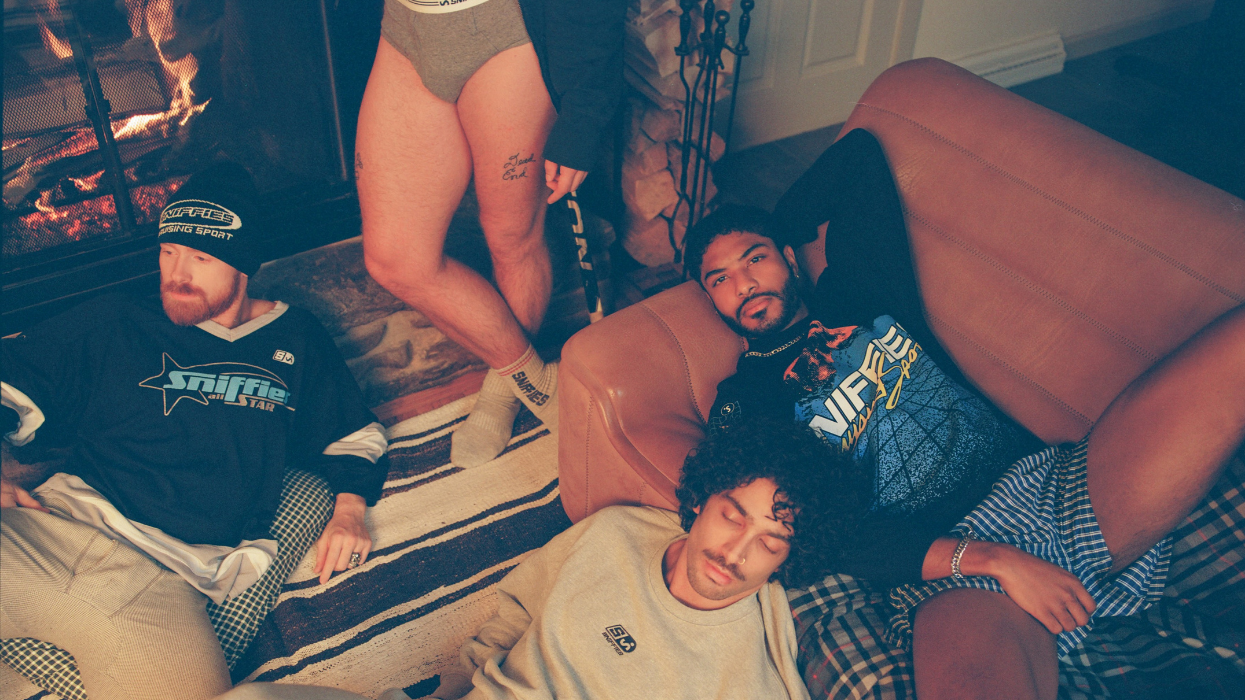Chris E. Vargas's superpower is prescience. In 2013, a year before Laverne Cox's TIME cover announced the "transgender tipping point," the interdisciplinary artist created a black-and-white broadside poster in response to the mainstreaming of the trans community, and how transness was being discussed as if it were a recent phenomenon. According to his online store, the promotional collage highlights more than 280 "hiroes & trancestors; artists & activists; the famous & the infamous; the real & the fictional; the living & the passed; those who self-identify as trans & those who predate the category." And just above those figures, in bold sans-serif typeface, lies the name of his dream: the then-imaginary Museum of Transgender Hirstory and Art, or MOTHA.
"I saw a ramp-up of representation in mass media of trans culture and stories, and I thought about the process marginalized people go through when they suddenly have this platform to deliver their story in a larger way," the Bellingham, Washington-based artist says. "I saw institutions looking at trans culture and experience, but I decided I wanted to do something bigger, like look at history and queer and trans biography in a more expansive way."
The poster was just the beginning of a momentum -- something Vargas hadn't anticipated. People began asking how they could visit MOTHA, and were curious about what it featured, but there was one problem: It didn't exist yet.
At least, not in the typical sense. Vargas never envisioned MOTHA as a brick-and-mortar museum. Just as transness and gender nonconformity are often defined by existing in different spaces at various points in time, he saw MOTHA as "a fluid, physical space or one that can take on many forms," and is "forever under construction." According to its website, the museum currently exists "as a series of autonomous off-site experiences." And it serves a dual purpose: elevating trans experiences and disrupting how the art world capitalizes on and tokenizes them.
"This project has always been very attractive to institutions despite its very critical nature of them," Vargas says. "Big, powerful entities love to absorb critiques of themselves as a way to diffuse it. I'm sort of exploiting that for my own ends and trying to get my foot in the door, and then also point to other work that I really think should get out there."
That exploitation (more accurately described as an intervention) comes by housing the traveling museum in established institutions like the Portland Art Museum, the ONE Archives in Los Angeles, and the New Museum in New York. For instance, where many museums will curate 100 items to define a noteworthy historical period, MOTHA's "Trans Hirstory in 99 Objects" showcases "significant artifacts in the history of transgender communities" to take up space that would have inevitably featured cisgender artists. The exhibition purposefully lacks the conventional 100th object, illuminating that history (or hirstory) is impossible to fully document, especially for the trans community.
"There's difficulty in narrating trans history solely from queer archives," Vargas says, referencing the emergence of the term transgender -- which has only been widely used within the last two decades -- as a major example. "So I decided to do a project that creatively exploits gaps in the archive, and opens those gaps up to artists who might creatively fill them in some ways, either by fabricating archival objects or making work that expands on little clues found in the archive or in an informal historical record."
The "Hirstory" exhibition contains mainstays like the transgender flag created by activist Monica Helms in 1999 and photography of legendary figures like Sir Lady Java, a renowned transgender activist and performer. However, the 2015 Los Angeles ONE Archives debut, "Legends & Mythologies," featured unique contemporary works like a "Sappho-inspired banner" by Tuesday Smillie, an altar of mourning by Wu Tsang and RJ Messineo, and a pubic hair collection by Emmett Ramstad. With nine artists in total, the collection gained critical acclaim and led to other iterations at Seattle's Henry Art Gallery and the Hammer Museum in Los Angeles.
In fall 2018, Vargas once again predicted the future. Just before this year's 50th anniversary of the Stonewall Riots, he created "Consciousness Razing -- The Stonewall Re-Memorialization Project," a new, special iteration of the "Hirstory" exhibit at the New Museum that examined the lore of the uprising. Vargas created a to-scale model of New York City's Christopher Park featuring 12 speculative monuments by different artists (including Chris Bogia, Thomas Lanigan-Schmidt, and D'hana Perry) using different mediums like music, poetry, and sculpture. The project directly tackles the cis- and white-washing of the narrative around Stonewall, and the official white-lacquered Gay Liberation Monument that has been critiqued for erasing the queer and trans people of color who were present at the events.
"I think MOTHA is about how we reckon with history and propel the kind of revolutionary thinking that's at the core of many activists into the future," says Sara O'Keeffe, assistant curator at the New Museum. "I think Chris is somebody that works with such generosity and integrity with other artists and with institutions, and his work has real critiques about how histories are cemented and retold. At the same time, it was really powerful to see the way his platform truly changes the possibilities for other artists."
Vargas has set out to bind the essence of trans experience through art and collective histories. With a body of work under his belt, he now plans to evaluate his various exhibits and take MOTHA even further. He opines about taking the exhibit to more places internationally (British Columbia, Canada, has seen it) and about possibly creating his own anthology. Wherever this project takes him, he feels that the landscape for trans art and narratives has exploded since he first created that poster six years ago.
"I think [exposure] is producing and pushing conversation around trans art even further. I see a lot more provocative art being made by trans artists because it's been shown that museums will show trans art," Vargas exclaims. "I think trans, gender nonconforming, and nonbinary art -- or any way language changes around this identity experience -- will always exist."
To find out where MOTHA will travel next, visit sfmotha.org.
This article appears in Out's May issue featuring artist Zanele Muholi and model Ruth Bell as cover stars. The issue is guest edited by Kimberly Drew. To read more, grab your own copy of the issue on Kindle, Nook, Zinio or (newly) Apple News+ today. Preview more of the issue here and click here to subscribe.































